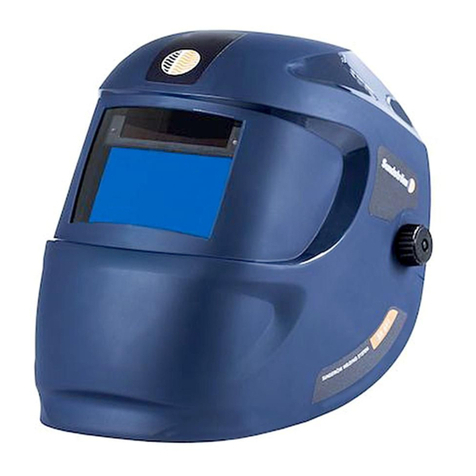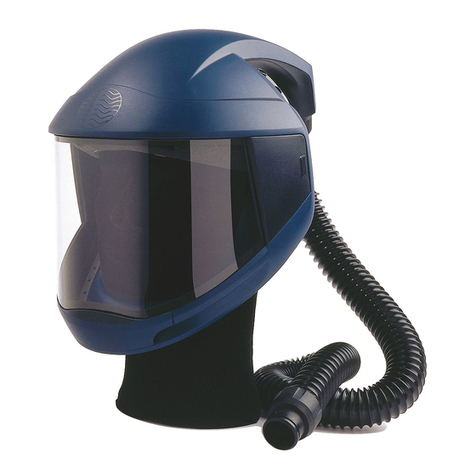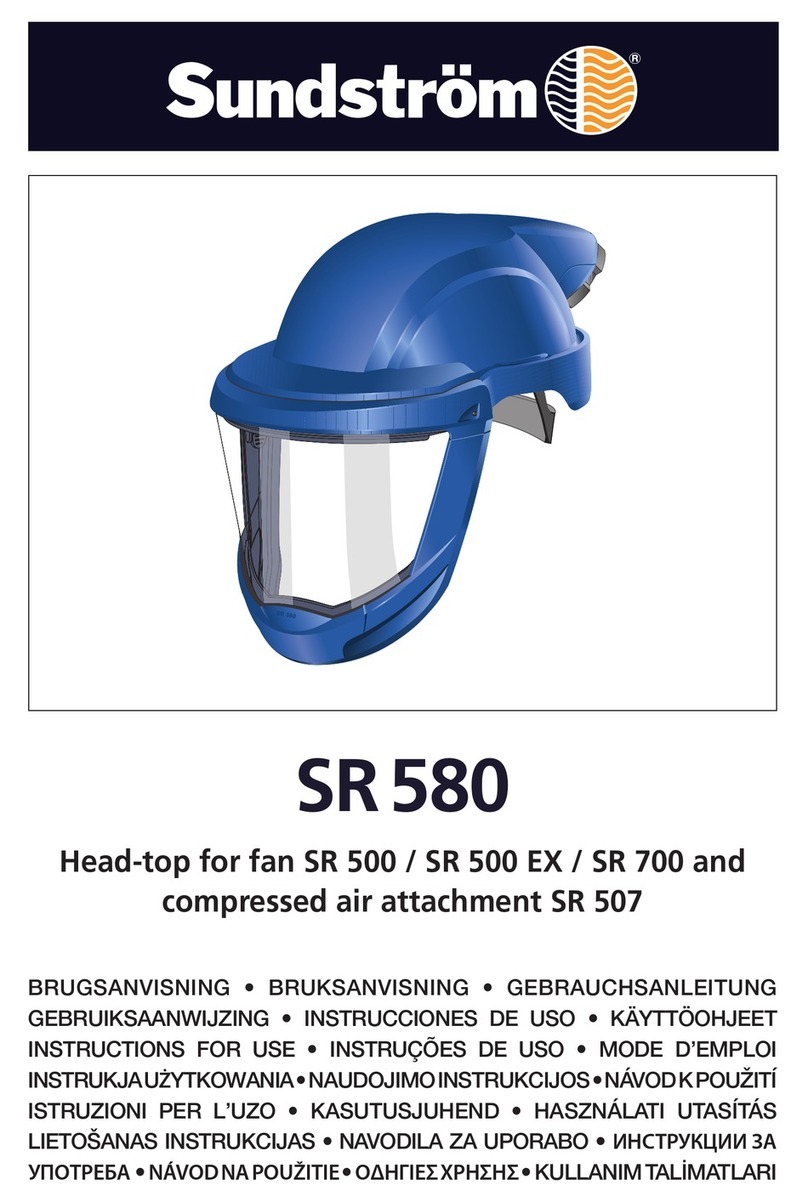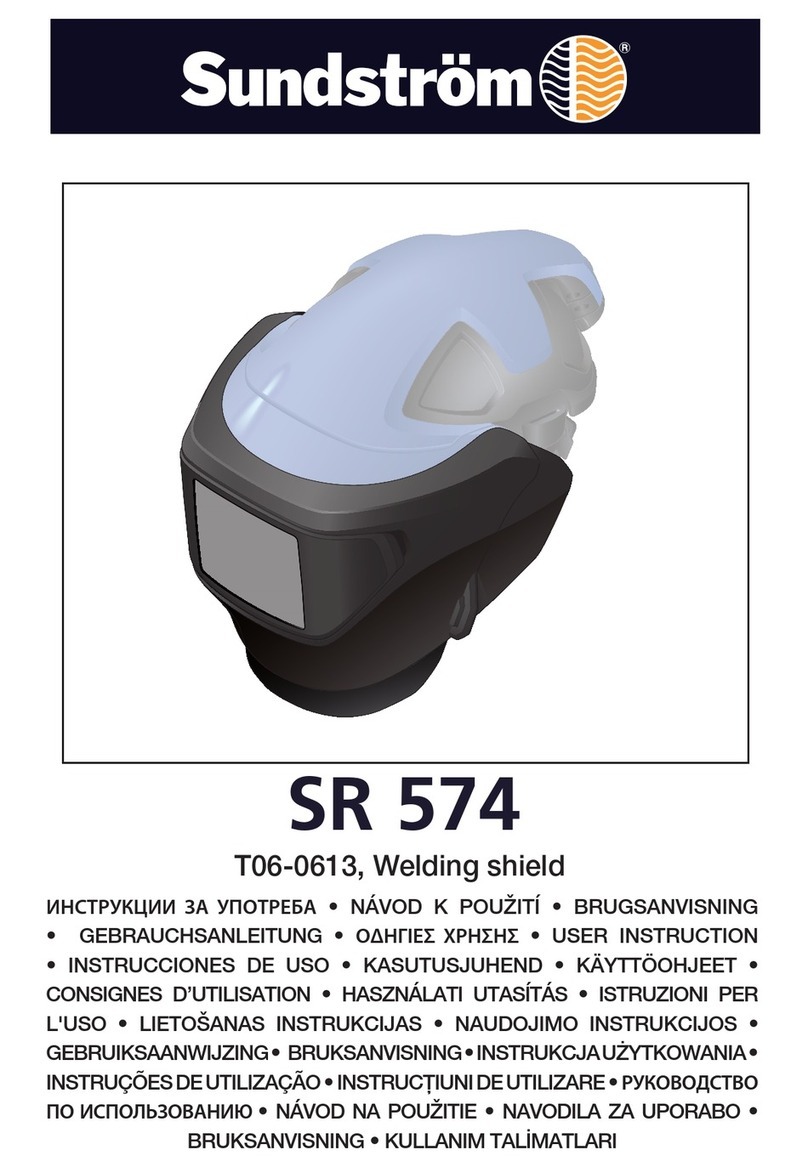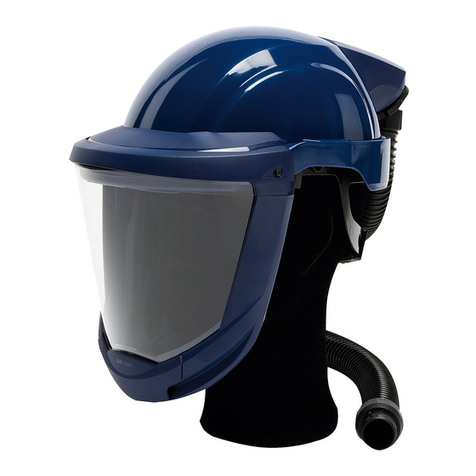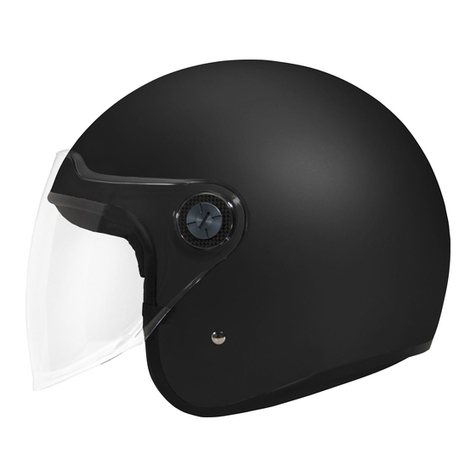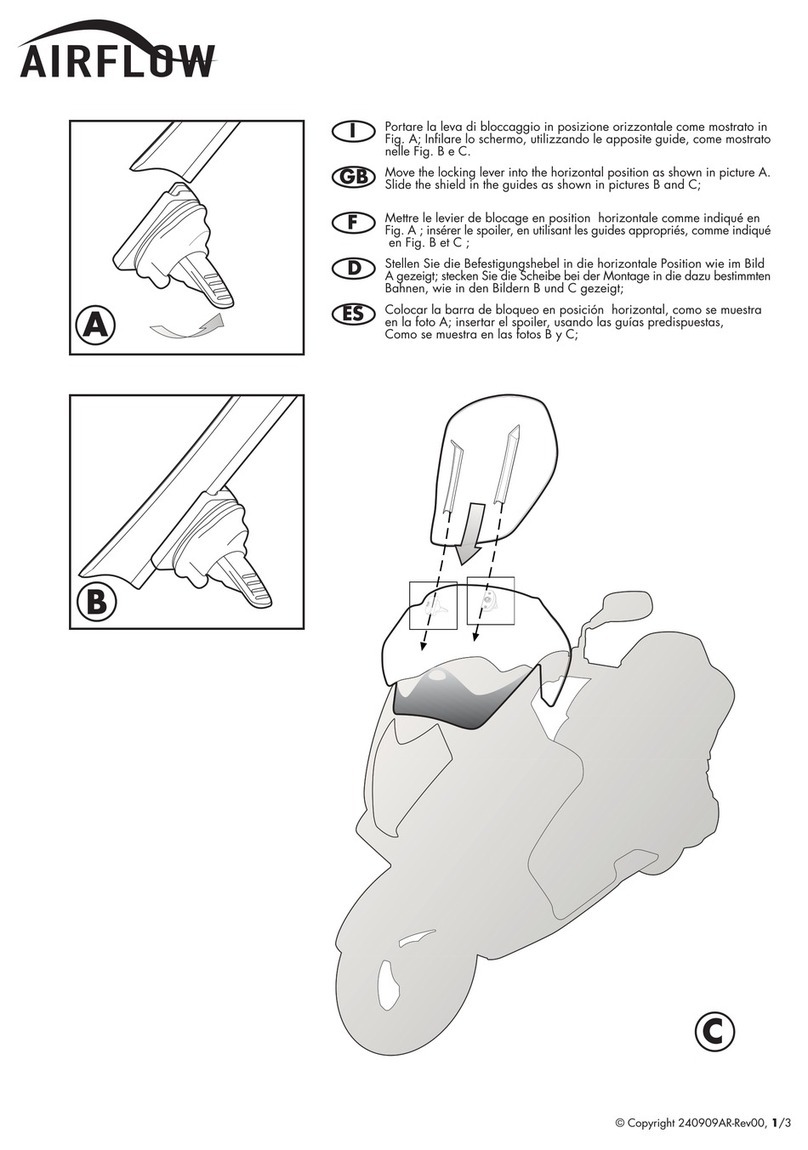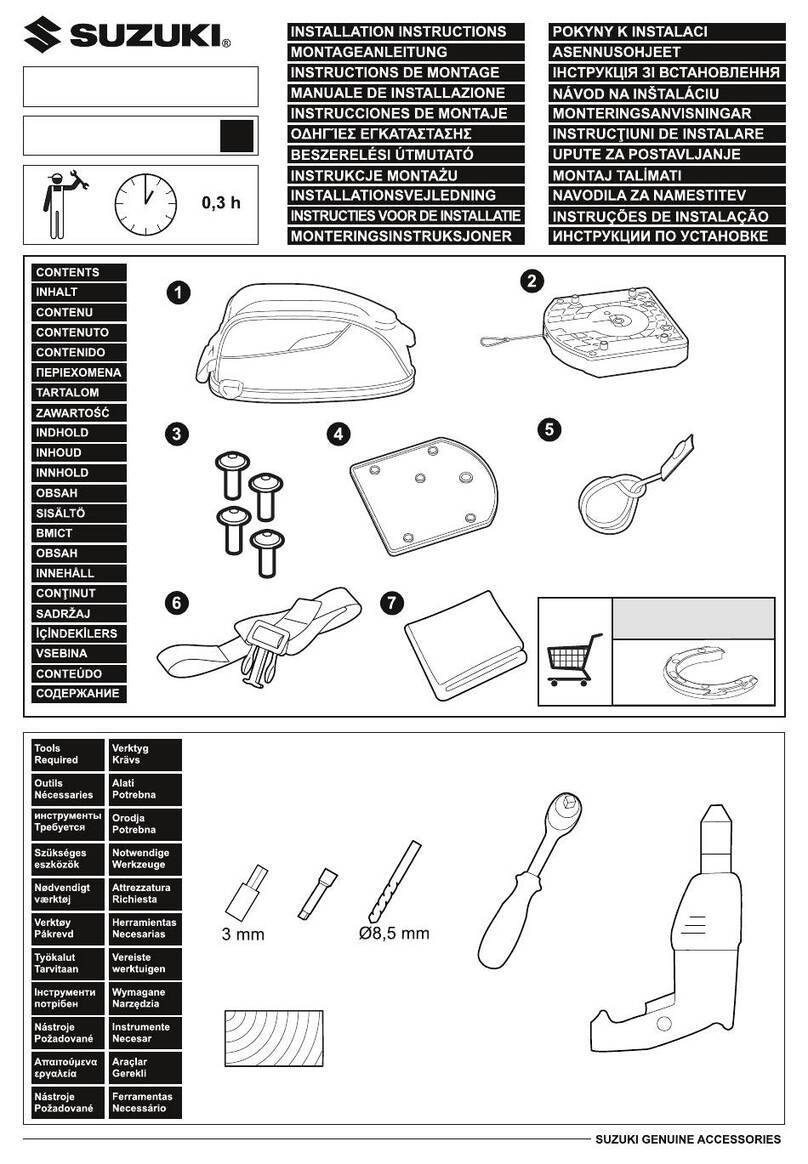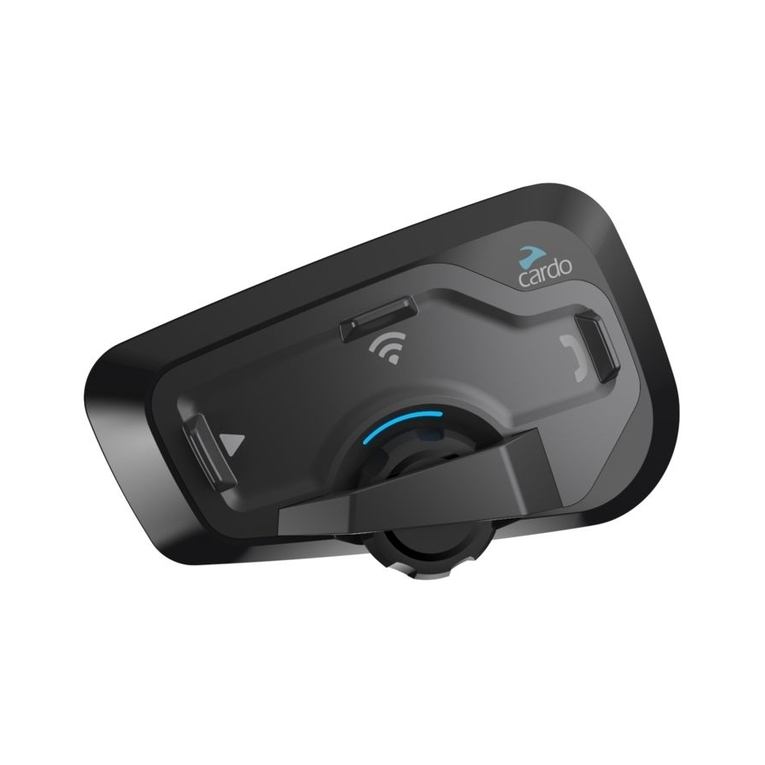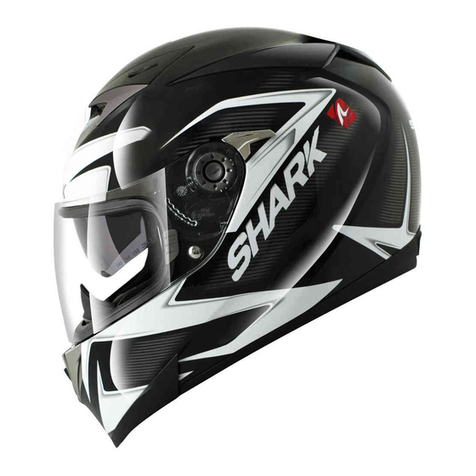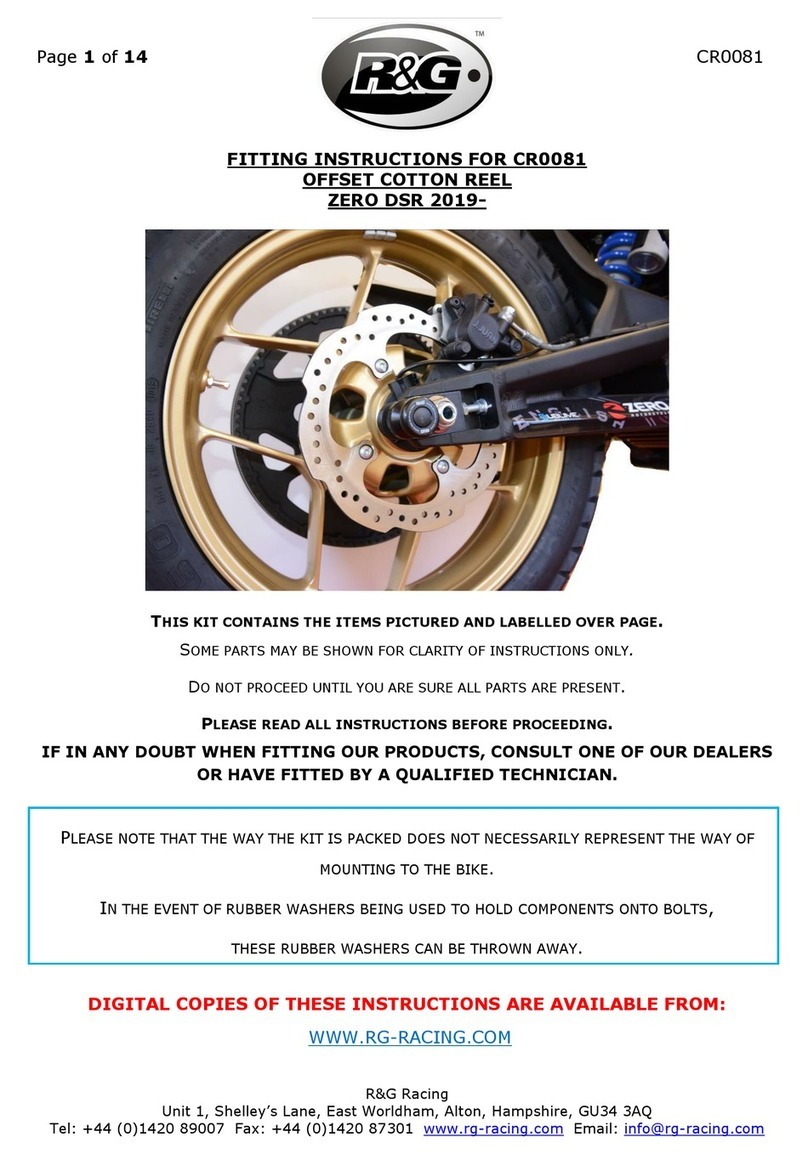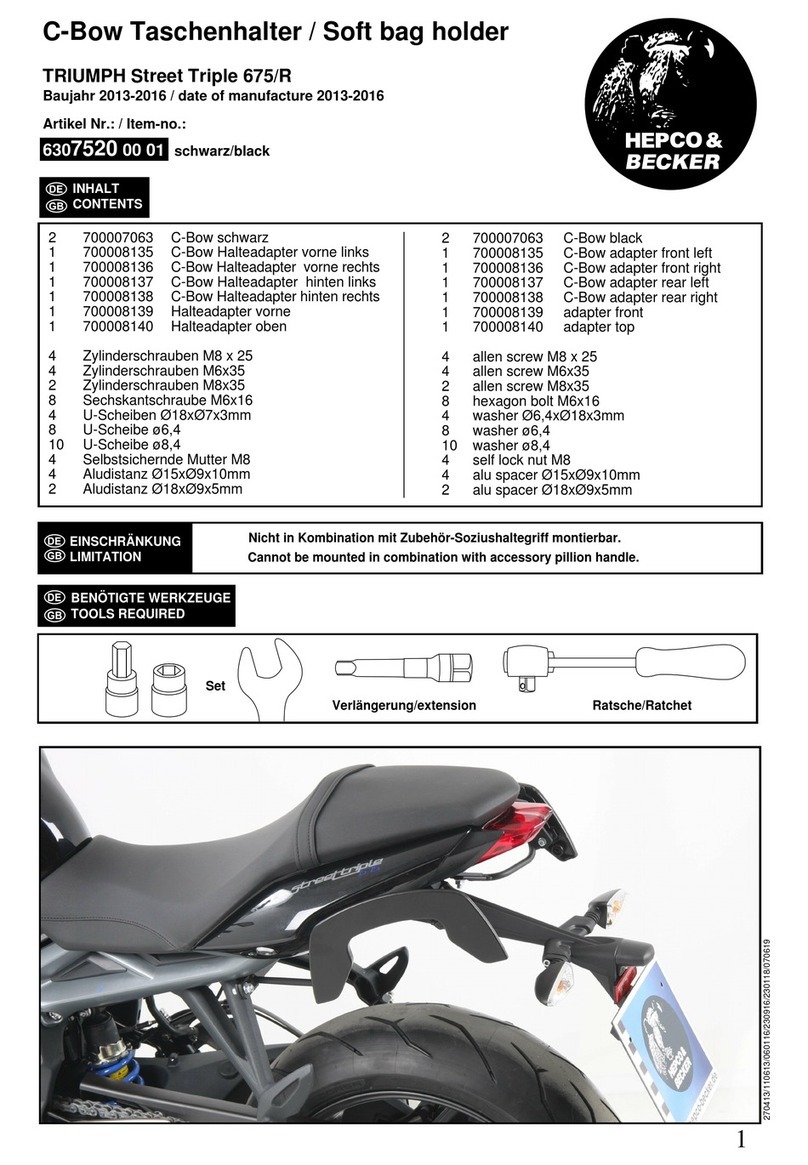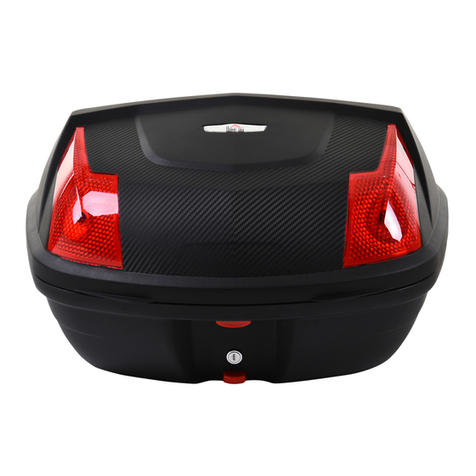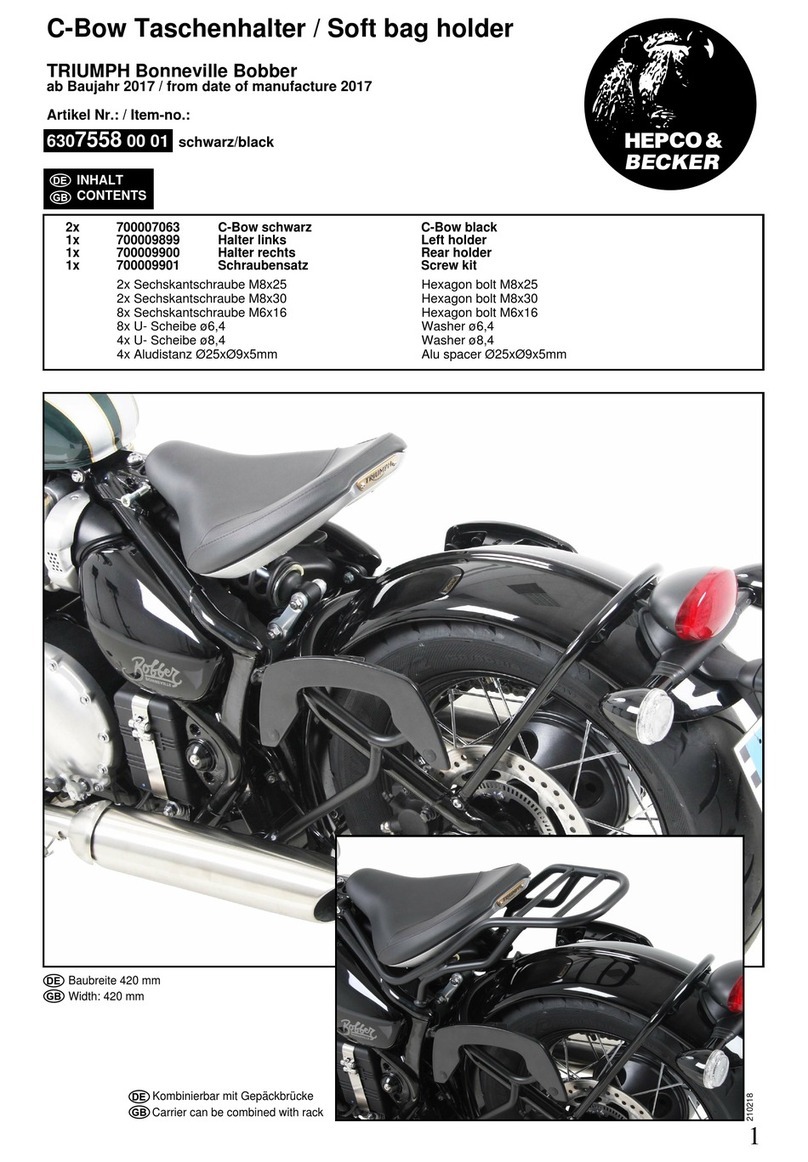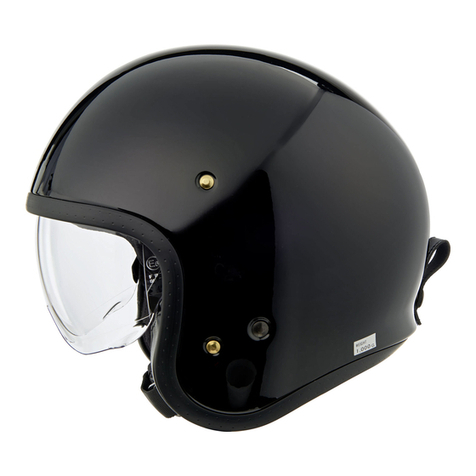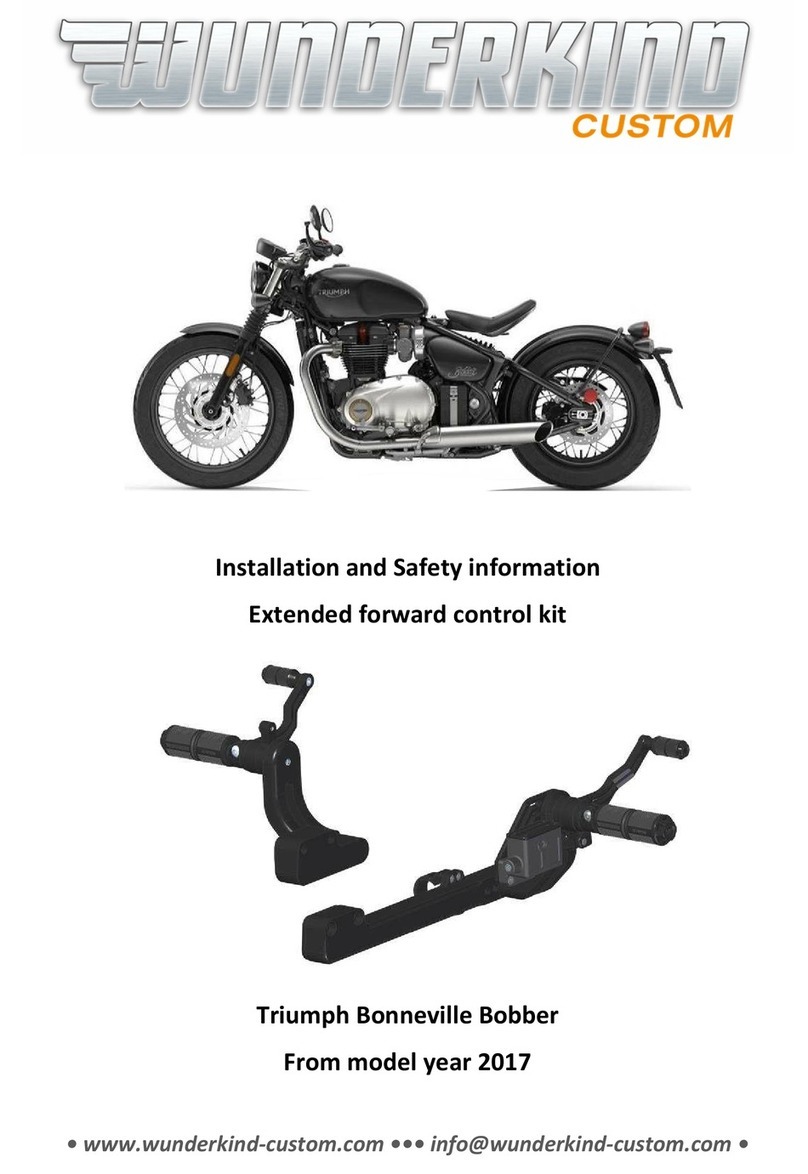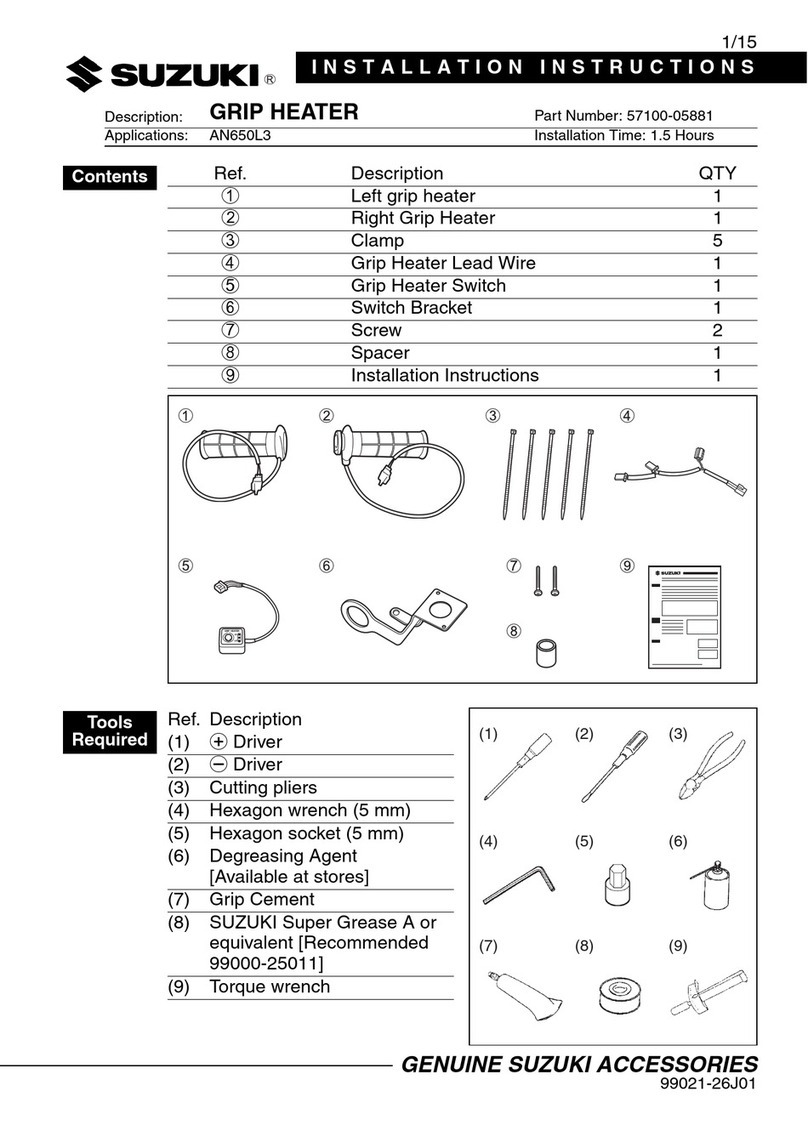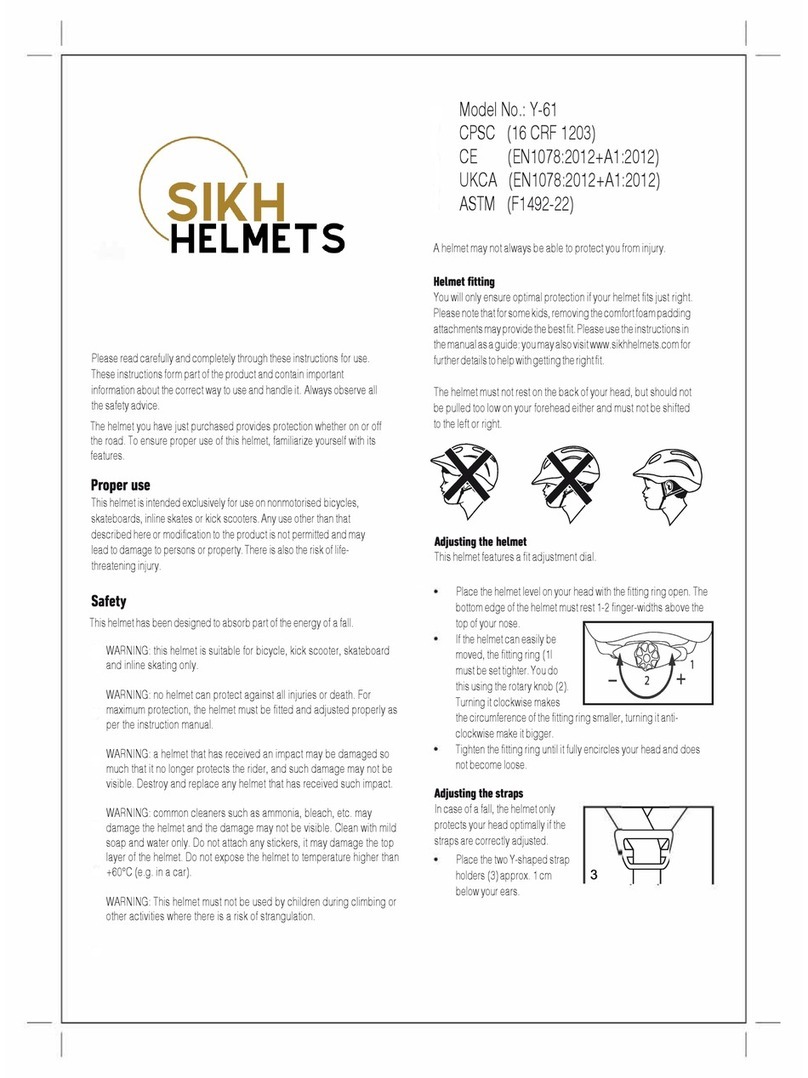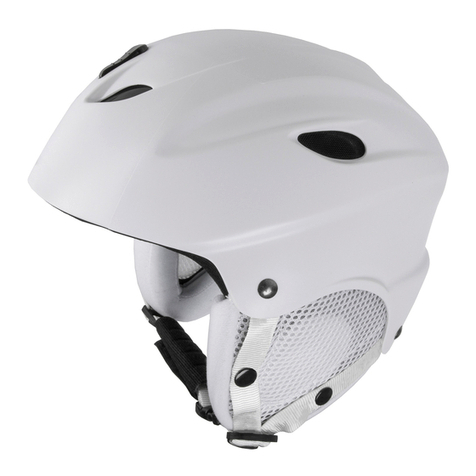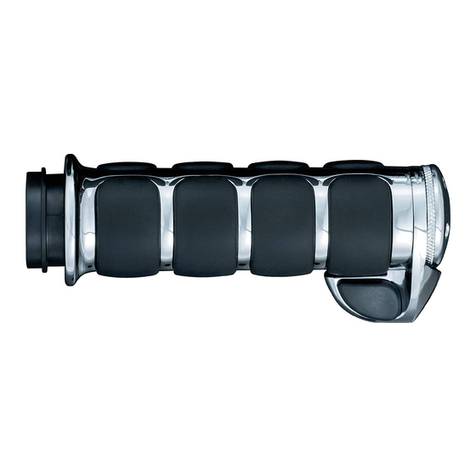
3
SR580 Helmet with Visor
1. General information
2. Parts
3. Use
4. Maintenance
5. Technical specification
6. Key to symbols
7. Approval
1. General information
Use of a respirator must be part of a respiratory protection
program. For advice see EN529:2005 or AS/NZS 1715:2009.
The guidance contained in these standards highlights important
aspects of a respiratory protective device program but does not
replace national or local regulations.
If you feel uncertain about the selection and care of the equip-
ment, consult your work supervisor or get in touch with the sales
outlet. You are also welcome to get in touch with the Technical
Service Department at Sundström Safety AB.
1.1 System description
SR 580 together with the fan unit SR 500/SR 500 EX and
approved filters is included in the Sundström fan-assisted respi-
ratory protective device system conforming to EN12941:1998
and the Powered Air Purifying Respirator (PAPR) system con-
forming to AS/NZS 1716:2012. (fig. 2). SR 580 can be used
together with fan unit SR500 EX in explosive atmospheres.
The breathing hose must be connected to the fan unit equipped
with filters. The above atmospheric pressure generated in the
head-top prevents particles and other pollutants from being
admitted into the breathing zone.
SR 580 can also be used together with compressed air
attachment SR507 (fig. 1). This combination forms a breathing
apparatus designed for continuous air flow, for connection to
a compressed air supply in accordance with EN14594:2005.
1.2 Applications
The SR580 together with fan SR500/SR500 EX or SR507
compressed air attachment can be used as an alternative
to filter respirators in all situations in which these are recom-
mended. This applies particularly to work that is hard, warm
or of long duration. When selecting the head top, some of the
factors that must be taken in to account are as follows:
• Type of pollutants
• Concentrations
• Work intensity
• Protection requirements in addition to respiratory protective
device.
The helmet/visor must only be used when carrying out work
it is intended for. The helmet provides limited protection by
reducing the force of falling objects that strike or penetrate the
top of the helmet shell.
The visor provides protection for the eyes and the face from
various hazards such as flying objects, impact, splashes and
airborne debris.
The risk analysis should be carried by a person who has
suitable training and experience in the area.
1.3 Warnings/Limitations
Note that there can be national differences in the regulations
for use of respiratory protective equipment.
Warnings
The equipment must not be used
• If the fan is not running. In this abnormal situation, the
equipment will provide no protection. In addition, there is
risk of carbon dioxide quickly accumulating in the head top,
which would lead to oxygen deficiency
• if the pollutants are unknown,
• in environments that are immediately dangerous to life and
health (IDLH),
• in environments where the ambient air is oxygen-enriched
air or does not have a normal oxygen content,
• if you find it difficult to breathe,
• if you smell or taste pollutants,
• if you experience dizziness, nausea or other discomfort.
Materials that come into contact with the skin of sensitive
people may cause allergic reactions.
Damaged or scratched occulars must immediately be replaced.
Eye-protectors against high-speed particles worn over stan-
dard ophthalmic spectacles may transmit impacts, thus
creating a hazard to the wearer.
Where the markings on the visor and visor frame are different,
the lowest applies.
The eye protection according to EN 166:2001 and AS/
NZS1337.1:2010 is valid at temperature -5 °C to +55 °C.
The head protection according to EN 397:2012 is valid at
temperature -30 °C to +55 °C.
The head protection according to AS/NZS1801:1997 is valid
at temperature -10 °C to +50 °C.
If protection against high speed particles at extremes of tem-
perature is required, the letter T must be written immediately
after the impact letter, i.e. BT. If not, the eye-protector shall only
be used against high speed particles at room temperature.
Limitations
• The head-tops must not be used together with peel-offs in
potentially explosive atmosphere.
• If the face seal is not firmly in contact with the face, the
pressure necessary for maintaining the correct protection
factor will not be established.
• If the user is exposed to very high work intensity, negative
pressure may occur in the device during the inhalation
phase, which may involve the risk of leakage into the
head-top.
• The protection factor may be reduced if the equipment is
used in surroundings in which high wind speeds occur.
• The seal of the head-top against the face must be assured.
This may be difficult to achieve if the user has a beard or
sideboards.
• Be aware that the breathing hose might make a loop and
get caught up by something in your surrounding.
• Never lift or carry the equipment by the breathing hose.
• The helmet is not designed to withstand penetrative impacts
from the front, sides or back, but can provide protection
against less severe impacts against those surfaces.
• Avoid contact with electrical wiring when using the helmet.
• When gluing items to the helmet, only rubber or acrylic-
based adhesives may be used. The helmet must not be
painted.
2. Parts
2.1 Delivery check
Check that the equipment is complete in accordance with the
packing list, and undamaged.
EN
